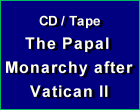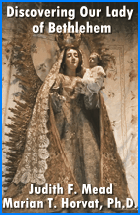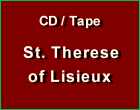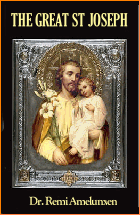Symbolism
 |
 |
 |
 |
 |
 |
 |
Winter & Summer Solstices at the Missions
Recently I came across a fascinating piece of the history on the California Missions, established by the Spanish Franciscans between 1769 and 1823.
The date December 21 marks the winter solstice, the shortest day and longest night of the year, presaging the birth of Christ who brought the light of salvation into the darkness of a fallen world. On that date, if you are in Mission San Juan Bautista as the dawn breaks, a sunbeam enters the small window over the main doors, creating a band of brilliant light that illuminates the altar.
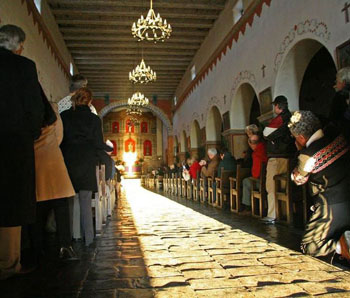 That intense stream of light shines directly on the Tabernacle, where Our Lord Jesus Christ resides in the consecrated hosts. It is beautiful and symbolic: The light is Christ who came on Christmas Day to bring His Light to the world.
That intense stream of light shines directly on the Tabernacle, where Our Lord Jesus Christ resides in the consecrated hosts. It is beautiful and symbolic: The light is Christ who came on Christmas Day to bring His Light to the world.
It is a whole catechism class in a symbolic beam of light: A brief moment when the splendor of Light takes form and illuminates not just a building, but the spirits of men, for light is properly the symbol of the spirit.
Was this brilliant light a coincidence or planned? That was the question asked by Dr. Ruben Mendoza, a California archaeologist at CSU Monterey Bay, who witnessed the event in 1997 after hearing about it from the parish priest there. Thus began his serious study of the early California missions.
In 2004 he realized that the same phenomenon took place on the date of the winter solstice in the Spanish Royal Presidio Chapel in Santa Barbara. The same unusual positioning of the church, on a bearing of 122 degrees east of north – several degrees offset from the mission's otherwise square footprint – was causing this illumination.
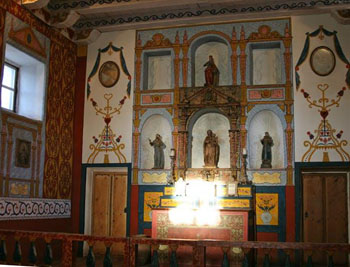 That slight skewering of the quadrangle had been carefully designed by those early Franciscan architects who had sufficient knowledge of astronomy and geometry to align the Mission Church to have precisely that effect: to illuminate the Tabernacle on the day of the winter solstice.
That slight skewering of the quadrangle had been carefully designed by those early Franciscan architects who had sufficient knowledge of astronomy and geometry to align the Mission Church to have precisely that effect: to illuminate the Tabernacle on the day of the winter solstice.
According to Dr. Mendoza, Mission Santa Barbara's orientation is virtually identical to that of San Juan Bautista. A solstice illumination would have been particularly dazzling in Santa Barbara, he said, where the original altar was inlaid with polished local abalone shells.
Summer solstice illuminations
When Dr. Mendoza made his careful investigation at Mission San Carlos Borromeo in Carmel, he discovered it was also deliberately skewed off kilter in its plan, designed to illuminate during the midsummer solstice, which occurs on June 21.
On that date in the lovely Carmel Chapel, the rising sun shines through the Star of Bethlehem window in the front of the Church and makes an intense blaze of light over the altar, shining on the Tabernacle and crucifixion scene in today's carefully restored Mission.
In the 1700s, it was not the crucifixion scene over the altar, but the life-size statue of Our Lady of Bethlehem. What a moving sight that must have been, Our Lady, the Mother of Christ and mankind, engulfed in the golden glow of the light of the sun on the longest day of the year.
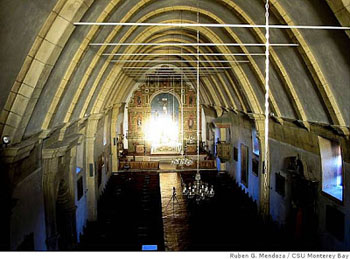 The summer solstice was another symbolic date in the medieval Catholic world. The summer solstice, also called St. John's Eve, occurs on June 21, the longest day of the year, presaging the birth of St. John the Baptist on June 24.
The summer solstice was another symbolic date in the medieval Catholic world. The summer solstice, also called St. John's Eve, occurs on June 21, the longest day of the year, presaging the birth of St. John the Baptist on June 24.
This has significance, for St. John Baptist was understood to be preparing the way for Christ, with St. John (3:30) stating: "He must increase, but I must decrease." This declaration is symbolized in the fact that the sun begins to diminish at the summer solstice. On the contrary at the winter solstice, the sun begins to increase.
Thus, John the Baptist's Mission representing the Old Testament should diminish while the light of the Redemption and the New Testament of Jesus Christ should increase and conquer the entire world.
Dr. Mendoza has documented that 12 missions in California are aligned to mark the winter or summer solstice. He also showed that the missions of San Miguel Arcángel and San José were oriented to illuminate altars on the Catholic Feast Days of Saint Francis of Assisi (October 4) and Saint Joseph (March 19), respectively.
At Mission Concepción, a solar illumination takes place in the evening of August 15, the Feast of the Assumption. At about 6:30 p.m., sunlight enters and illuminates the face of Our Lady in a painting above the altar, while another beam of light shines into the dome of the Church onto the center of the cross-shaped building.
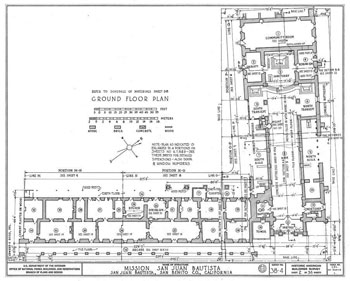 Light also enters one of the four small windows atop the Church’s 54-foot-high dome and crosses the north altar on December 8, the Feast of the Immaculate Conception, December 12, the feast of Our Lady of Guadalupe, and December 21, the winter solstice.
Light also enters one of the four small windows atop the Church’s 54-foot-high dome and crosses the north altar on December 8, the Feast of the Immaculate Conception, December 12, the feast of Our Lady of Guadalupe, and December 21, the winter solstice.
The details of how the buildings are engineered to produce these solar illuminations of the Mission altars – like the one at right – offer evidence for the scientific mind of how and why these phenomena occur.
Of more interest to me is the medieval spirit that motivated those Franciscan missionaries to plan the illuminations, knowing as they did, that the Indians who believed the sun had godlike powers would interpret that light that illuminated the Tabernacle as a sign pointing to the One True God of the Catholic Church.
Indeed, it is a marvelous evidence we can still witness today: that the heavens tell the glory of God and the firmament proclaims his handiwork. (Ps 19:1)

The date December 21 marks the winter solstice, the shortest day and longest night of the year, presaging the birth of Christ who brought the light of salvation into the darkness of a fallen world. On that date, if you are in Mission San Juan Bautista as the dawn breaks, a sunbeam enters the small window over the main doors, creating a band of brilliant light that illuminates the altar.

Winter solstice at Mission San Juan Bautista
It is a whole catechism class in a symbolic beam of light: A brief moment when the splendor of Light takes form and illuminates not just a building, but the spirits of men, for light is properly the symbol of the spirit.
Was this brilliant light a coincidence or planned? That was the question asked by Dr. Ruben Mendoza, a California archaeologist at CSU Monterey Bay, who witnessed the event in 1997 after hearing about it from the parish priest there. Thus began his serious study of the early California missions.
In 2004 he realized that the same phenomenon took place on the date of the winter solstice in the Spanish Royal Presidio Chapel in Santa Barbara. The same unusual positioning of the church, on a bearing of 122 degrees east of north – several degrees offset from the mission's otherwise square footprint – was causing this illumination.

A brilliant display of light at Santa Barbara mission
According to Dr. Mendoza, Mission Santa Barbara's orientation is virtually identical to that of San Juan Bautista. A solstice illumination would have been particularly dazzling in Santa Barbara, he said, where the original altar was inlaid with polished local abalone shells.
Summer solstice illuminations
When Dr. Mendoza made his careful investigation at Mission San Carlos Borromeo in Carmel, he discovered it was also deliberately skewed off kilter in its plan, designed to illuminate during the midsummer solstice, which occurs on June 21.
On that date in the lovely Carmel Chapel, the rising sun shines through the Star of Bethlehem window in the front of the Church and makes an intense blaze of light over the altar, shining on the Tabernacle and crucifixion scene in today's carefully restored Mission.
In the 1700s, it was not the crucifixion scene over the altar, but the life-size statue of Our Lady of Bethlehem. What a moving sight that must have been, Our Lady, the Mother of Christ and mankind, engulfed in the golden glow of the light of the sun on the longest day of the year.

Carmel Mission summer solstice
This has significance, for St. John Baptist was understood to be preparing the way for Christ, with St. John (3:30) stating: "He must increase, but I must decrease." This declaration is symbolized in the fact that the sun begins to diminish at the summer solstice. On the contrary at the winter solstice, the sun begins to increase.
Thus, John the Baptist's Mission representing the Old Testament should diminish while the light of the Redemption and the New Testament of Jesus Christ should increase and conquer the entire world.
Dr. Mendoza has documented that 12 missions in California are aligned to mark the winter or summer solstice. He also showed that the missions of San Miguel Arcángel and San José were oriented to illuminate altars on the Catholic Feast Days of Saint Francis of Assisi (October 4) and Saint Joseph (March 19), respectively.
At Mission Concepción, a solar illumination takes place in the evening of August 15, the Feast of the Assumption. At about 6:30 p.m., sunlight enters and illuminates the face of Our Lady in a painting above the altar, while another beam of light shines into the dome of the Church onto the center of the cross-shaped building.

Plans for San Juan Bautista that mathematically explain how the solstice takes place
The details of how the buildings are engineered to produce these solar illuminations of the Mission altars – like the one at right – offer evidence for the scientific mind of how and why these phenomena occur.
Of more interest to me is the medieval spirit that motivated those Franciscan missionaries to plan the illuminations, knowing as they did, that the Indians who believed the sun had godlike powers would interpret that light that illuminated the Tabernacle as a sign pointing to the One True God of the Catholic Church.
Indeed, it is a marvelous evidence we can still witness today: that the heavens tell the glory of God and the firmament proclaims his handiwork. (Ps 19:1)

Posted December 21, 2018
______________________
______________________



